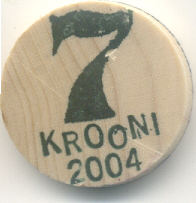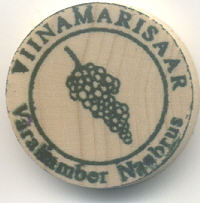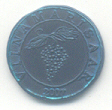 |
 |
| Viinamarisaar |
| Viinamarisaar (Grape Island) is a fantasy land located as a small island in the Baltic Sea. | |
|
Location: Baltic Sea Size 3,396 acres Population 73 Languages Estonian |
|
| Viinamarisaar, except for a short time during World War II, has been inhabited since the 1300s. The original settlers were Swedes who lived an isolated pastoral life on the island. | |
| Baltic Sea Islands have a long history of inhabitation. Many operated as tight knit self-sufficient communities that were completely isolated from the world. Some of the more well known islands included Ruhnu, Parkis and Saarnaki. In each instance they were Swedish-speaking. They fished, cultivated the land and raised cattle. | |
|
While research on Viinamarisaar does not specifically indicate, it is likely
the islanders were much like those who lived on the well documented Ruhnu.
Radio Sweden went to Ruhnu in the early 1940s finding the lifestyle had
changed little in over 400 years. They were a religious people living by a
strict code of conduct not unlike the Swedes of the 1500s. They had little
contact with the outside world and lived self-sufficient simple lives in a
number of communities on Ruhnu. Indeed, their lifestyle differed little from
the British isles where crafting was the mainstay. The lifestyle was not so
unlike the Amish found mostly in the United States of America and Canada. Fearing invasion, the islanders fled the island during World War II. It was not until the late 1940s when the first families returned to Viinamarisaar accompanied by a small number of Estonians. |
|
| Operating as a farm cooperative, Viinamarisaar floundered until residents realized grapes could produce the funds needed to make Viinamarisaar more prosperous. While Baltic storms affected the crop some years, overall, grape growing was deemed a success. This was an unusual choice and critics claimed grapes could not be grown in such a harsh climate. While it is true for most varieties, a few grape varieties are hardy enough to flourish in the Baltic climate. | |
| More and more grapevines were started on the island until finally, aside from patches of land dedicated to grazing and gardens, the island was covered by vineyards. | |
| Even during Russian rule, Viinamarisaar was an outpost that experienced little contact with the outside world. With the fall of the Soviet Nation, Viinamarisaar suffered. The trade partners were now looking at an uncertain economy and an uncertain government. The residents of Viinamarisaar had few markets for their grapes, so winemaking began. | |
| Winemaking on the island has always been on a very small scale. Economics demanded small outputs and the market viewed Viinamarisaar wines as a rare find, resulting in very good prices. Viinamarisaar exclusively produces "ice wine". Ice wine is made from grapes picked while frozen and crushed while frozen. Most of these grapes are sold to wineries wholesale. | |
| During a typical year about 400 cases of 375 ml. bottles of Viinamarisaar ice wines are produced on the island. Ice wines are made from the Vidal Blanc grape. The wine generally fetches about 300 Euros per case through direct sale from the island. Unfortunately, direct sales to individuals are not permitted. Buyers must be licensed companies. Visitors to Viinamarisaar, however, can purchase the wine at generally around 25 Euros per bottle. | |
|
The wine is called a 'new wine' and it is intended to be consumed after
purchase. The alcohol level is 11.5%. The island still operates as a farm cooperative in some respects. While land is now owned by families, a central organization oversees the marketing of Viinamarisaar grapes and wines. The organization secures good prices on the items needed to operate a vineyard. This includes hired specialists. All landowners are members of the cooperative. All employees on the island work for the cooperative in lieu of the landowner. |
|
|
With no bank on the island, the availability of money is limited. After all,
cooperative bank accounts are off-shore and those buying Viinamarisaar
products use a more efficient mode of payment than cash. The cash shortage was met with a local currency that can be exchanged on the island or even cashed in at the cooperative office for a paper cheque if going off the island. Initially, after the collapse of the Soviet Union, the paper notes were deemed worthless but after the newly formed cooperative found a couple of markets for the products produced on Viinamarisaar, the notes were considered a local currency, especially when the cooperative would gladly write a cheque for those notes cashed in. |
|
| Initially crudely made paper notes denominated in Aspers were circulated. These ranged from thin white notes to sturdy paper chits not much more than about an inch square. Several other styles were circulated as needed. Few have survived the last decade. | |
| Wooden tokens appeared several years ago to replace paper notes. The last of these were denominated in Krooni. Like the paper notes, the wooden coinage is becoming harder to find each year. | |
 |
 |
 |
 |
| . | |
| Finally in 2007, metal coins were made. The coins were not only intended for local circulation but also for coin collectors. Earlier these coins were to be offered, purposed in nine metals each having a denominated of 7 Krooni. Anyhow it was minted only in five metals: Anodized Alloy of 92.5% Niobium with 7.5% Tantalum in Blue with Teal overtone (Mintage: 100 pieces), Anodized pure niobium in Deep Purple (Mintage: 100 pieces), Anodized pure titanium in Rose/Purple (Mintage: 100 pieces), Brass (Mintage: 150 pieces) and Copper (Mintage: 250 pieces). At this point the dies were retired. The coins are 17mm in diameter, are Uncirculated and come with a Certificate of Authenticity. The coins all bear the same design, with the denomination on one side and the name of the country, date and a bunch of grapes on the other. These coins were designed by William (Bill) Turner and produced by Shire Post. | |
| The denomination, 7 Krooni, represents the pay for a lug of grapes (about 30 pounds or 14 kg). A slow worker picks about 20 lugs a day, but the best pickers can pick 40 to 50 lugs. Estonia raised the minimum wage from 3,000 Krooni per month to 3,600. Viinamarisaar is expected to issue 9 Krooni coins soon. Viinamarisaar is considering moving to the Euro as the denomination for its coinage, but this has not been decided. If it does occur, it will be in 2008 or later. | |
| Today various vineyards dot the island, owned by the extended families that own the land. Each family dedicates a portion of their land for gardens and cattle. | |
| The cooperative acts as a clearing house for all products produced on Viinamarisaar. The work of the cooperative involves storage, marketing, shipping and collecting payment for all the output of Viinamarisaar. The cooperative is run by the landowners and operated by a management team hired by the cooperative. In essence, the cooperative is involved in almost every aspect of life on Viinamarisaar. | |
| There is still the sense of true isolation on Viinamarisaar even as the islanders go about their daily chores coupled with plenty of social interaction. On Viinamarisaar the facts remains, you're a good distance from anywhere and no roads lead to Viinamarisaar. | |
| Micro-Nations | |
| Chiefa Coins | |